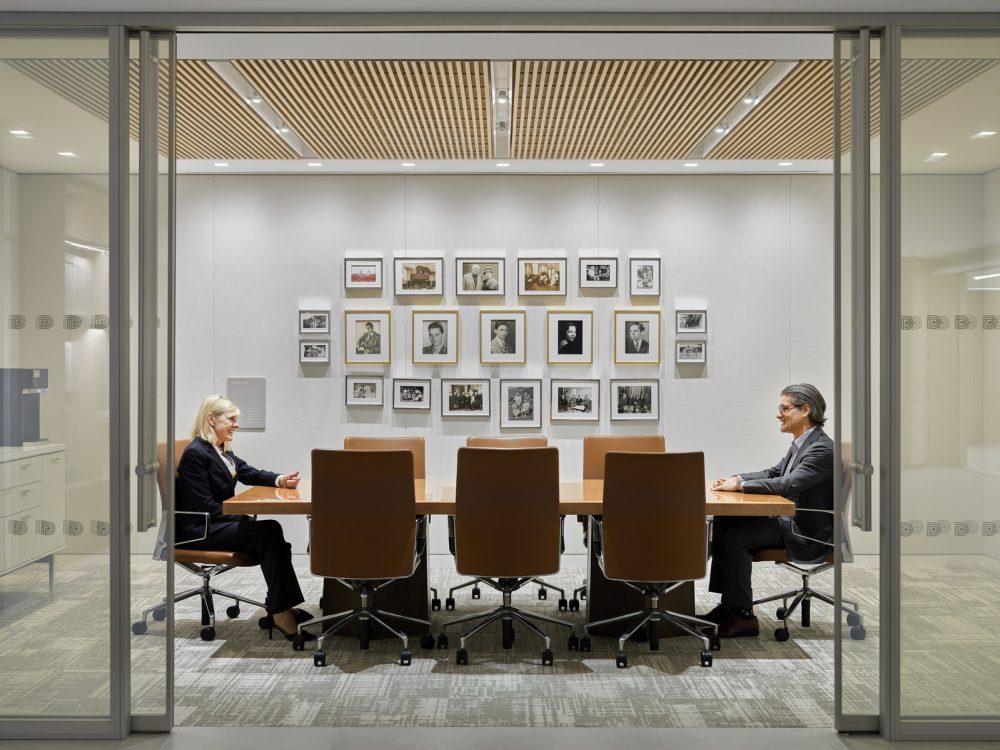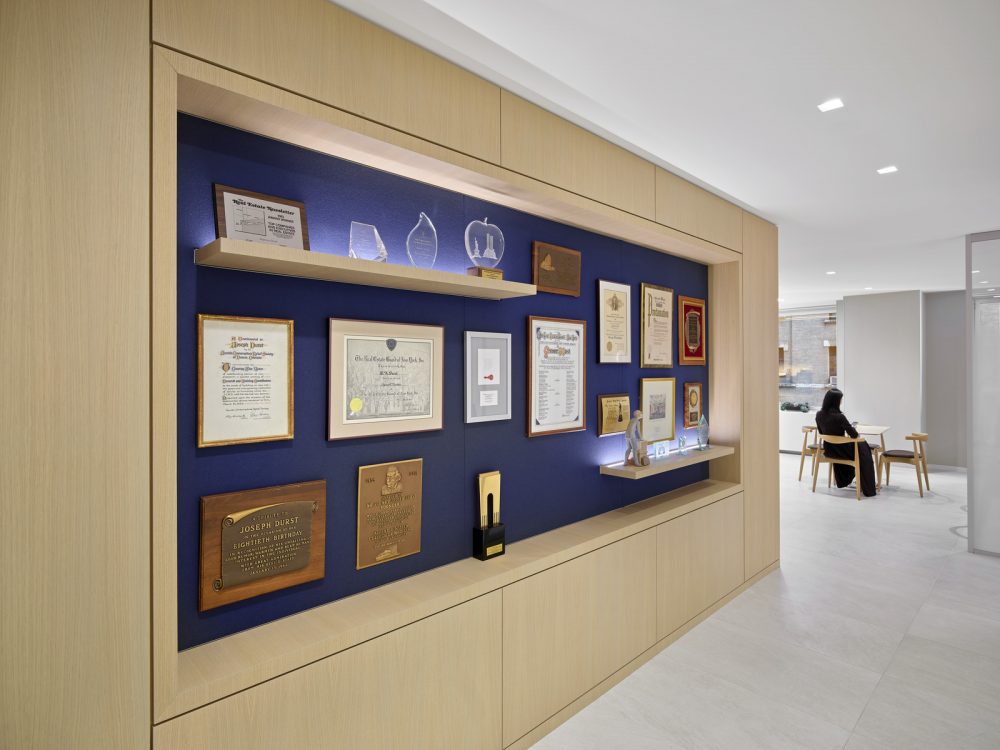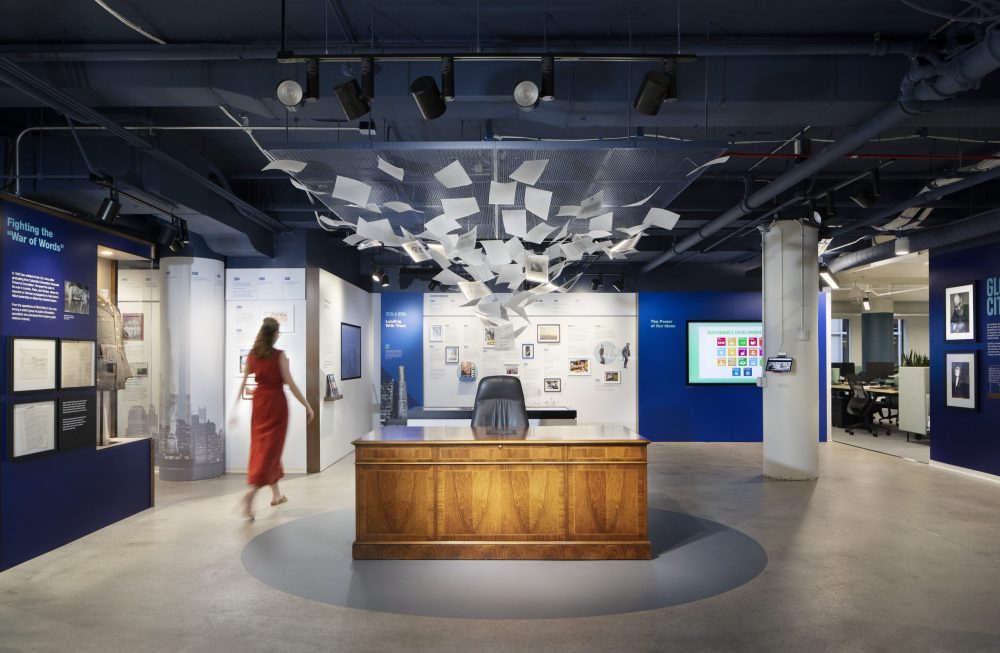Gensler‘s Laura Gralnick and Kelvin Chiang highlight a new trend for the future of the workplace: Heritage.
Every company has a story. Origin stories about visionary founders, key figures, missteps and milestones that are told and retold as company lore, used to entice new clients, and shape media narratives. With workforces today spanning an unprecedented six generations, it’s no surprise we’re seeing a renewed interest in capturing these oral histories before it’s too late. But where do these company histories live day-to-day?
For years, websites have been one of the few vehicles used to capture important moments throughout a company’s lifespan, with the occasional timeline mounted on a wall within the workplace, or commemorative coffee table book in the lobby. These moments are typically organized into chronological timelines buried somewhere on the company website’s “About” section. Often, these stories are presented in a way that feels “old,” as if they could collect dust in pixel form. Inevitably, these timelines tend to stop at some random date, waiting ever so patiently for an update or two, until finally… they’re abandoned. “We don’t want to be perceived as ‘old’ or ‘irrelevant’”—a common mischaracterization about the role company history plays in the workplace experience. As purpose-led designers, however; we see this as a missed opportunity. We are in constant search of ways to design a bespoke and differentiated experience for our clients—often leveraging stories from their past as a platform for creativity.

Generational Shift
Fortunately, the perception of “history as dust-collector” has begun to shift, Harvard Business Review reports. What would otherwise be viewed as faux-pas, history-inspired activations have increasingly become a sought-after engagement in workplace projects. More and more, clients are looking to Gensler to breathe new life into their company histories, and to do so using the built environment, leveraging these legacies in new ways that imbue the workplace with authenticity and character. They take many forms, depending on the desired experience and depth of content. Artifact displays, interactive storytelling, and even styling can be choreographed as part of a holistic heritage “display” or journey.
It appears this shift has a direct relationship to the current retirement surge. Known as the “Peak 65” generation, more than 4.1 million Americans will be turning 65 each year through 2027, according to a white paper published by the Retirement Income Institute. Because of this, a fear has begun to emerge among our clients’ leadership tiers—as more and more senior colleagues retire, important stories from the past are at risk of walking out the door with them.

Broader Perspectives
In this environment, we’re encountering a new set of critical client stakeholders as we’re engaged to develop history-inspired exhibits and activations. From brand and communications teams, tenured employees to even family members, we’re digging deeply to ensure these often “invisible” stories are captured in a way that respects the past but also provides context for the future. There is an inherent sense of honor that comes with “passing the torch” that makes our content development process deeply rewarding—for all parties (including us). It is, after all, a great way to add your imprint to a company’s story that future generations will look to and remember.
Increasingly, we are collaborating with clients with staff archivists, a role that seldom existed previously. We suspect this partnership will become more commonplace, especially with our Consumer Goods and Financial Services clients. According to the U.S. Bureau of Labor Statistics, jobs that deal in the preservation of history are projected to grow at an astonishing 11% through 2033—one of the fastest growing occupations in America. In addition, AdAge indicates that CMOs are adding archivists onto the payroll so that they can deliver on the desire for richer, more nostalgic content by both internal and external audiences.

Sense of Purpose
The desire to attract and retain talent remains a top priority for many employers. Workers are not only looking for a diversity of amenities to make their workday commute-worthy, but they’re also looking to spend their days working for a company with a clear sense of purpose beyond money-making. In a time when everyone has a personal “brand,” companies must take this desire into consideration. An employer’s brand — their mission, vision, and values — need to be so much more than a logo on the front door or forgotten section of the company website. These principles require a certain amount of translation through experiences that go beyond interior design in order to become memorable and tangible.

A Worthwhile Effort
The tasks involved with content development for history activations may appear daunting at first. Content lives across a variety of mediums. Our team of strategists and designers leverage detailed mechanisms to ensure every aspect of the project — from character counts to story approvals across stakeholders — are managed and easily updated throughout the process. The benefit to this process of collecting, organizing, and digitizing your stories is that they bring additional value beyond the project at hand. Now they can be more broadly accessed within your company, and beyond.
Your stories provide context to where you’ve been, what you’re doing now, and where you’re going—bringing a unique sensibility to the workplace experience in a way that cannot be manufactured or replicated.
All photos courtesy of Gensler.

